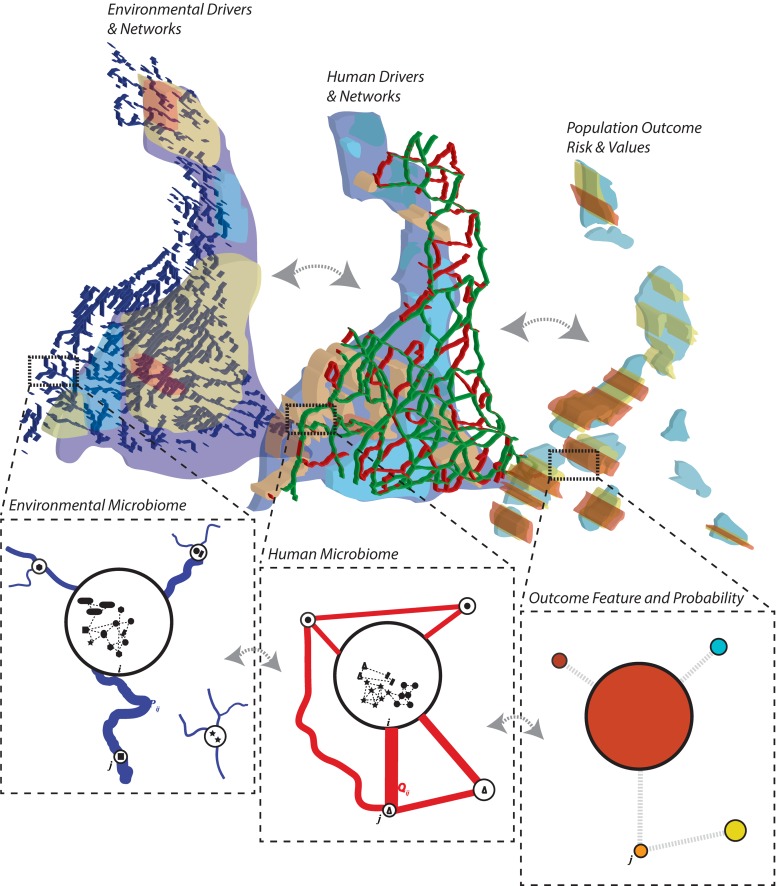FIGURE 1.
Metacommunity approach for studying the ecology and evolution of the microbiome. The ecosystem is discretized in communities (nodes) connected via environmental and human links representing relevant connection determining the spread of species and/or hosts such as river networks and human mobility networks (Convertino et al., 2009; Coyte et al., 2015; Bashan et al., 2016). Local/nodal environmental and human features constitute the likely niche of species to exist in a community. The human-environmental microbiome nexus (HEM), that is the multiplex network between functionally relevant microbiome networks in the human population and the environment, determines some population outcomes of interest (such as diseases in human populations, and other ecological outcomes such as collective population abundance and functional diversity in animal populations). Each node of the community can contain a detailed characterization of the microbiome interaction network or graph (see Figure 4). Systemic inter-community networks can also be inferred from information theoretic models (Convertino and Valverde, 2019; Li and Convertino, 2019) or statistical models based on interdependence of microbial patterns.

